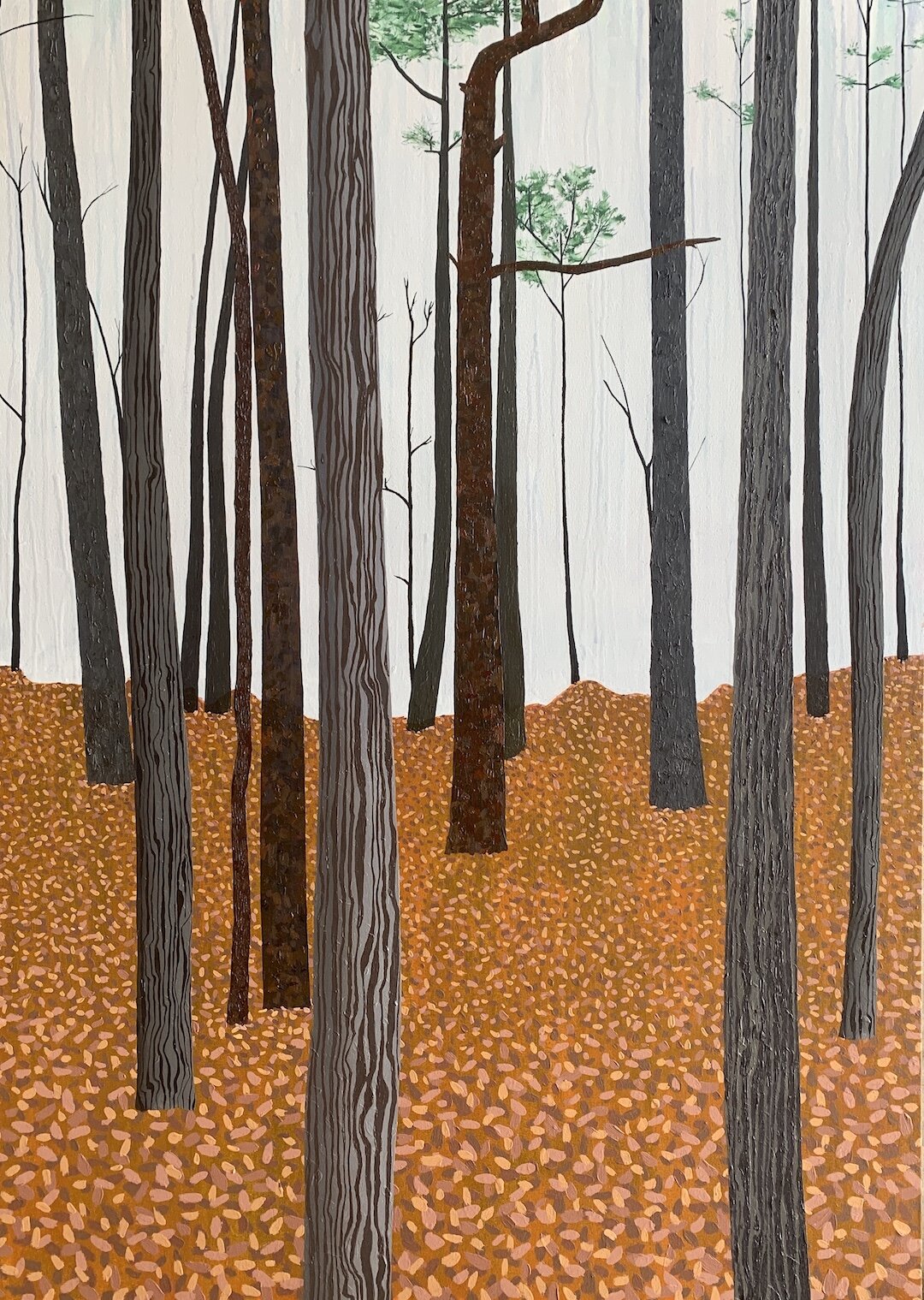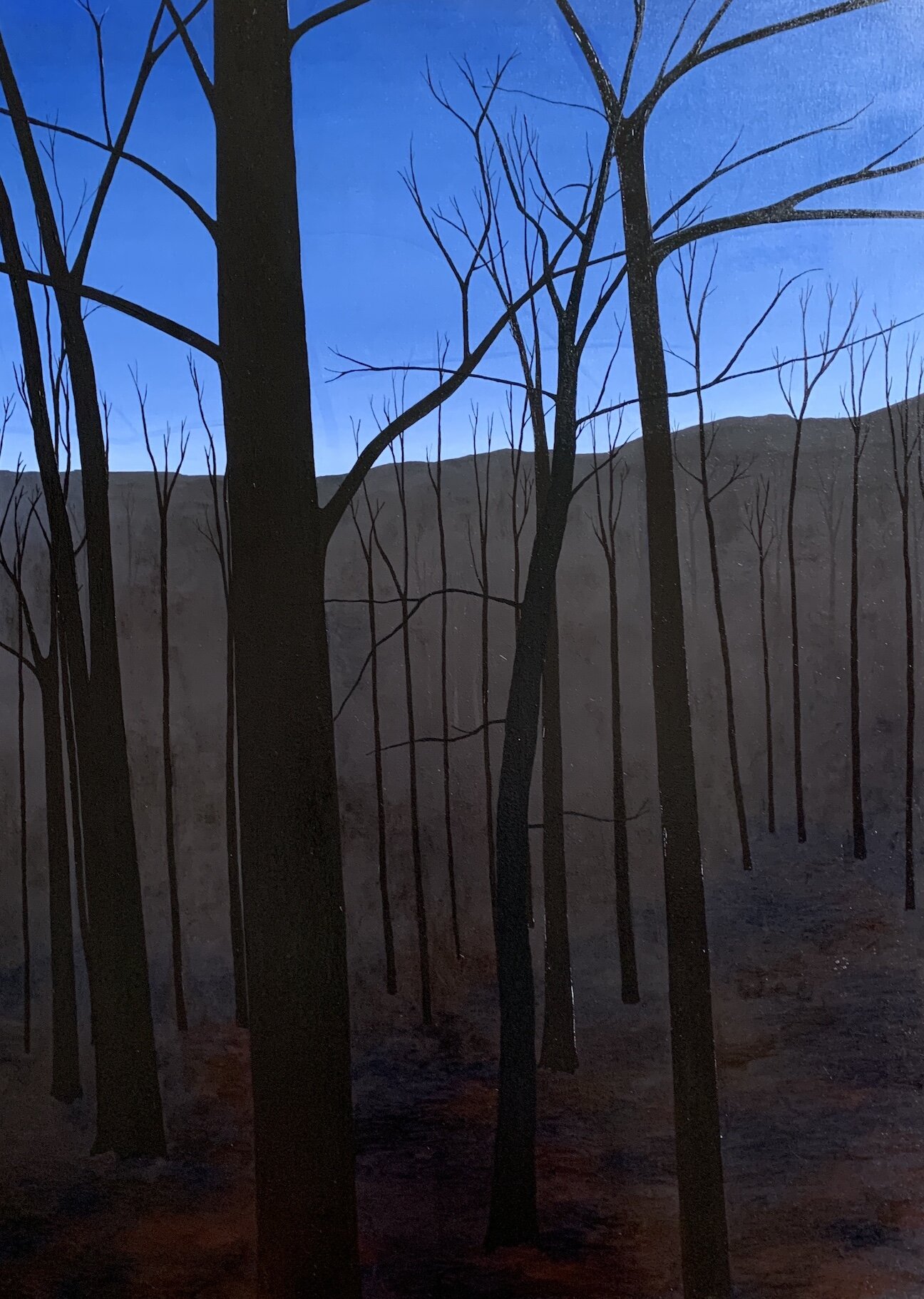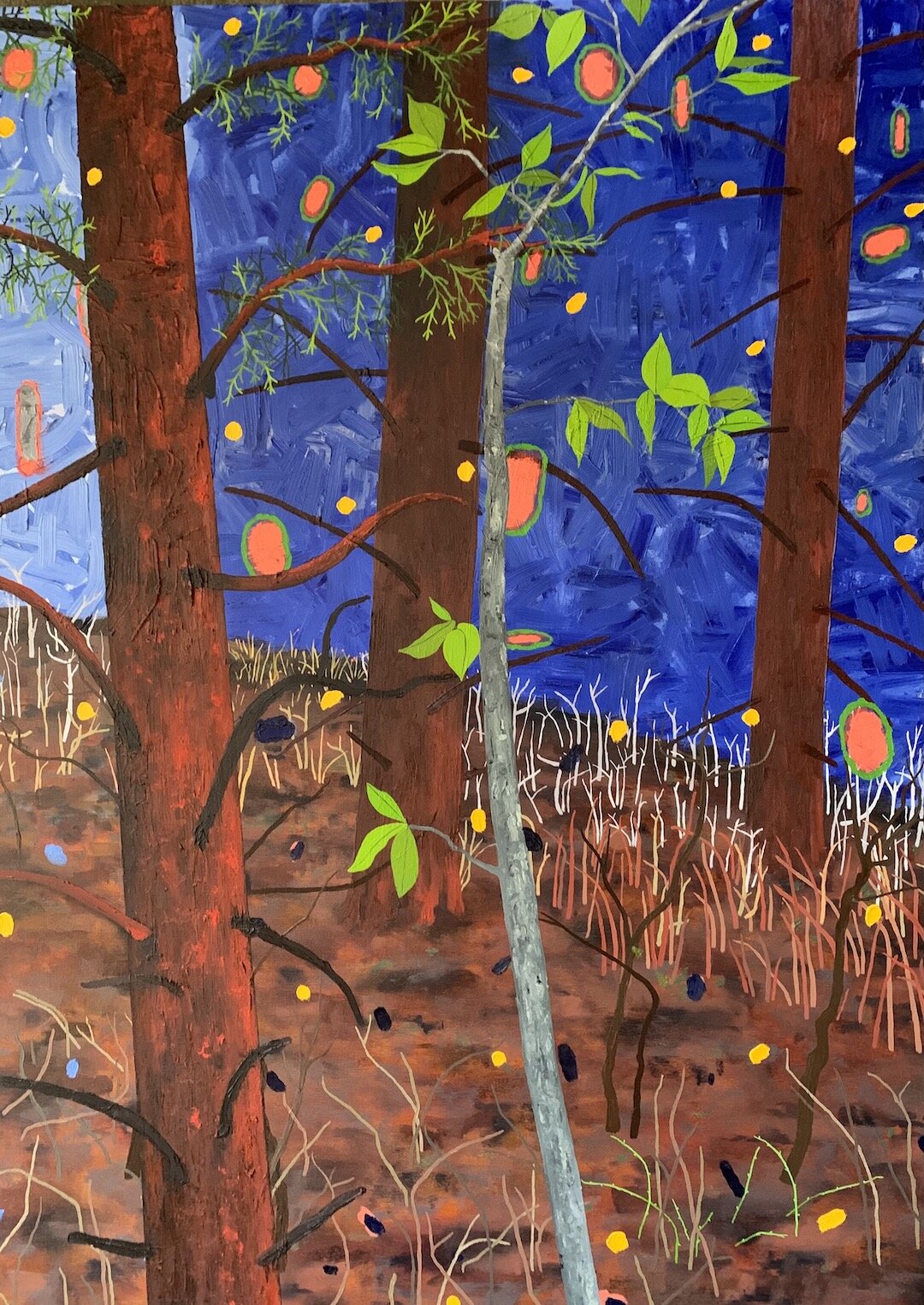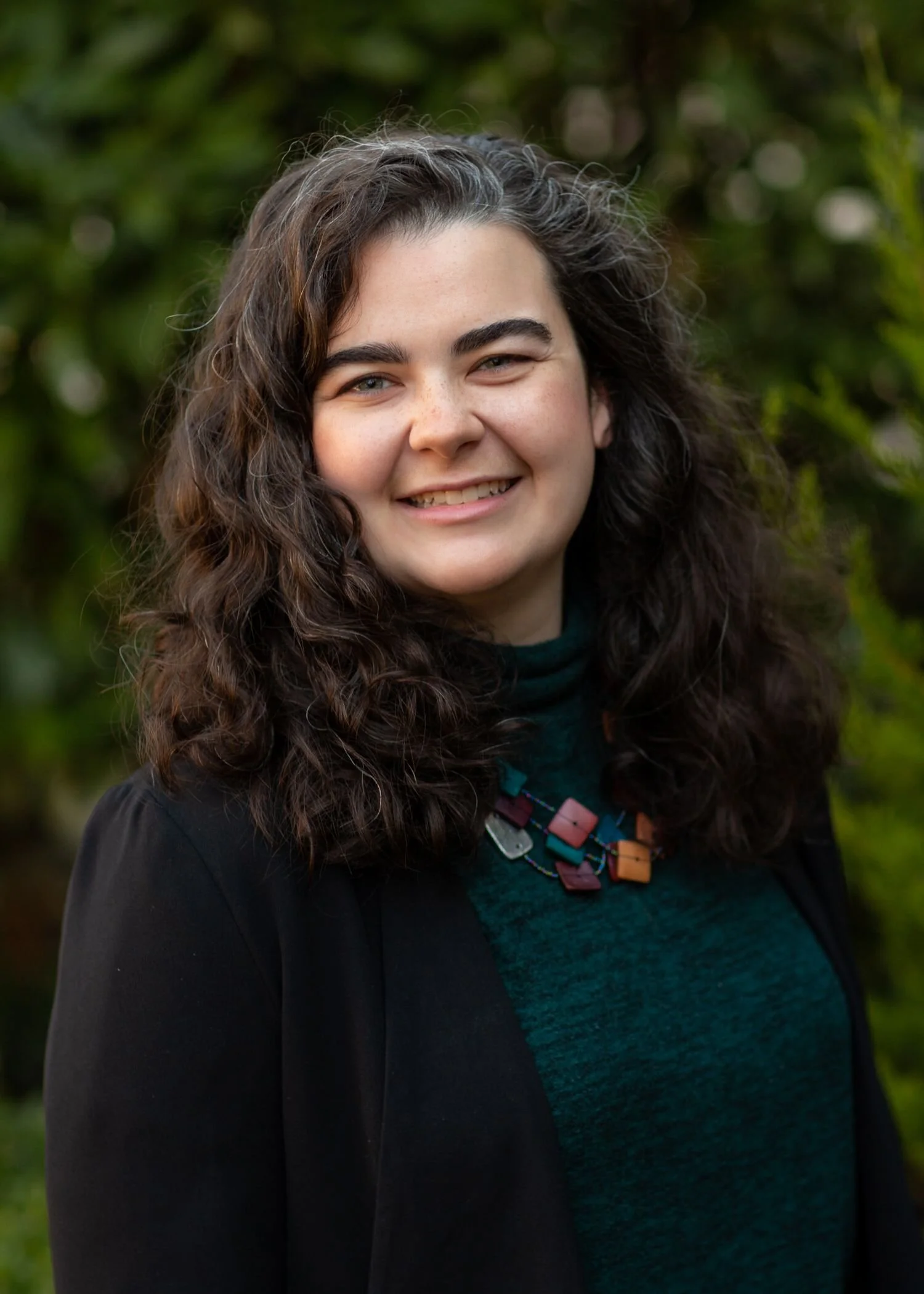Interview with artist Steven Wise
Steven Wise is an artist living and working Rogers, Arkansas. Steven’s most recent paintings explore the beauty of Northwest Arkansas but with a unique perspective that is sometimes dreamlike – and always interesting. His work pulls you in for a closer look. Steven’s paintings have been selected for inclusion in many high-profile exhibitions. More of his work can be found at Justus Fine Art Gallery in Hot Springs, Arkansas and at his website stevenfwise.com.
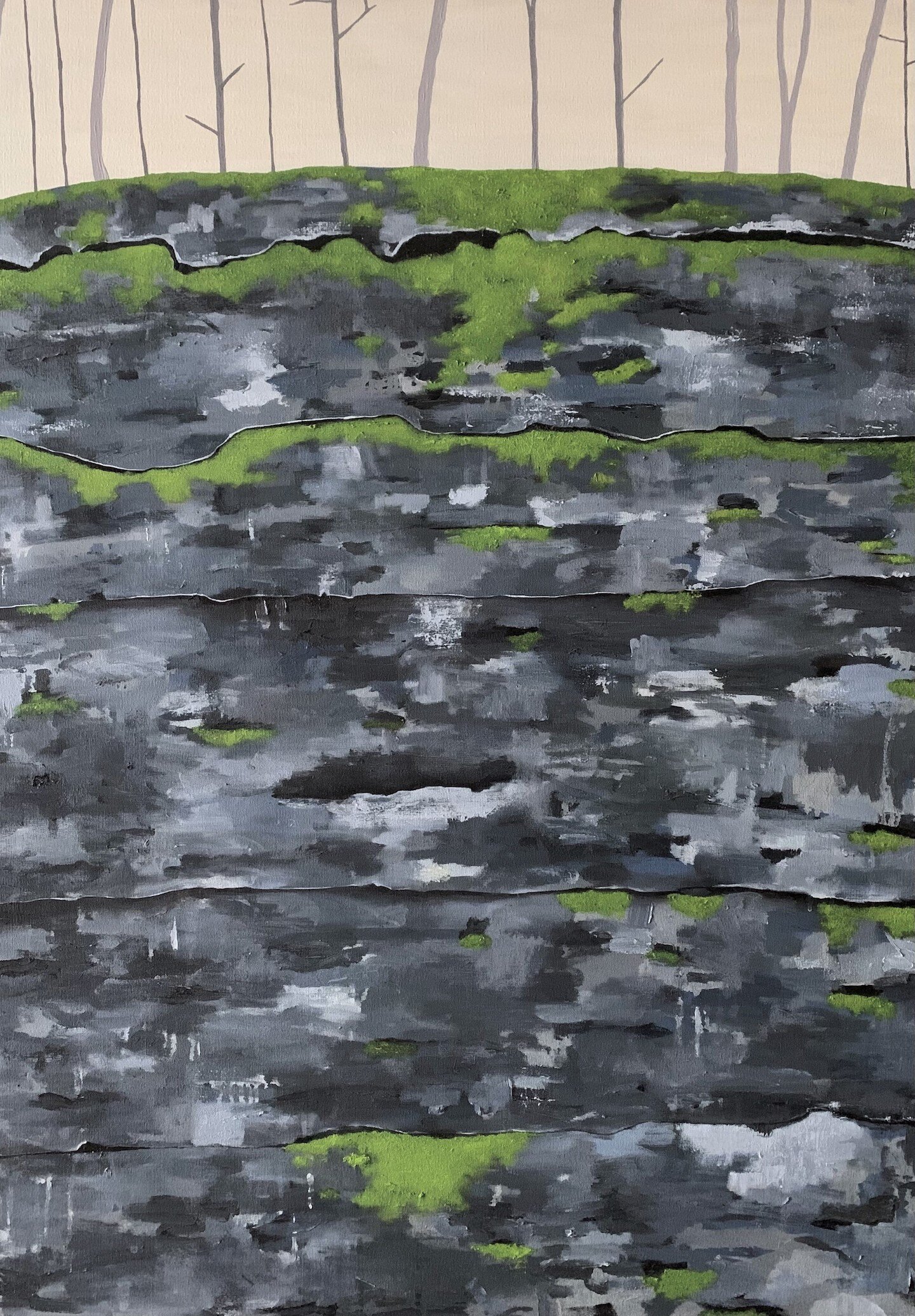

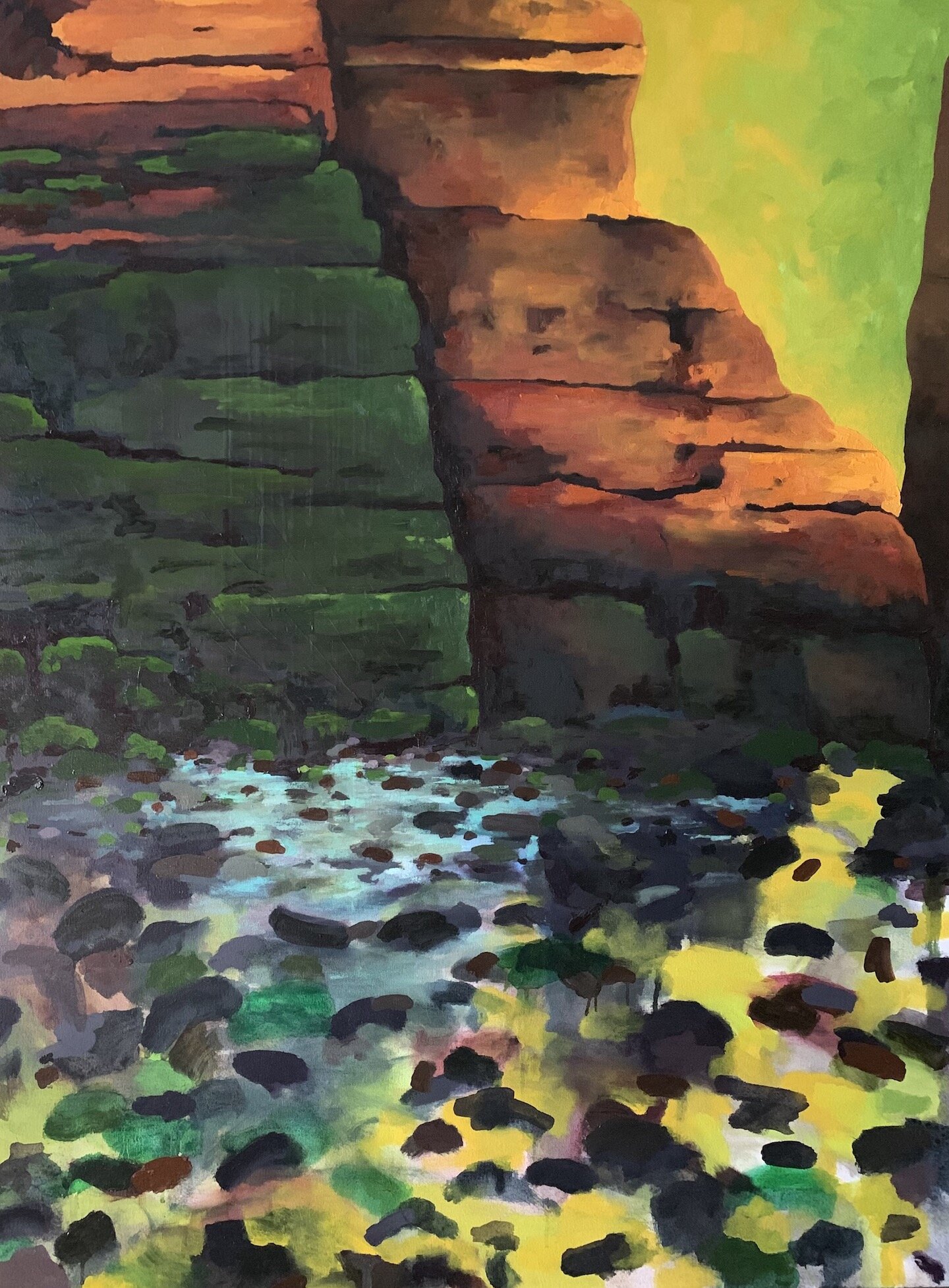
AAS: Steven, where did you receive your art training?
SW: I left Arkansas to go to college in Pennsylvania. I earned a BA in Art History from Swarthmore College, which is outside of Philadelphia. After college, I stayed in Philadelphia for few years. I briefly worked at the Philadelphia Museum of Art before I started taking art classes in the city at Tyler School of Art. I ended up working at a local coffee shop that was located in a Philadelphia neighborhood where many artists lived. I learned a lot about being a professional artist just working at the coffee shop. Being in a city around artists who were making a living as artists led me to grad school. I earned an MFA from the University of Iowa in 1998.
AAS: And you returned to Arkansas right after that?
SW: Yes, I returned home to Little Rock in the fall of 1998. I luckily found some adjunct teaching work at UCA and Hendrix. Not long after returning to Little Rock, I ventured to Fayetteville with my family. We liked Fayetteville, and I found work teaching as an adjunct professor at the University of Arkansas. With two young kids, Fayetteville was too expensive, so we ventured north to Rogers. At the time, Rogers was such a smaller place. Fast forward 15 years, I have a total of five kids and have been teaching art in the public schools and Northwest Arkansas Community College. Currently, I am working half-time for the Rogers Public Schools and teaching Painting courses for Northwest Arkansas Community College.
Tributary of King’s River, 44” x 32”, oil and acrylic on canvas
AAS: You have described yourself as a naturalist and artist inspired by the beauty of the Ozarks. Has nature always inspired your art, even as an art student?
SW: No, I have not always been interested in working from life. In fact, my current work is a departure from my larger body of work that spans more than 25 years. This change in approach was the result of the desire to do something different. You could say that I was bored with abstract painting. I definitely still believe in abstraction and will slowly turn the naturalistic paintings more and more abstract. I am letting my experience with each painting lead me to the next idea. My Ozark pictures are definitely becoming more and more gestural. My color palette is becoming more expressive as well. I consider myself an abstract artist even if my work is representational. When looking at nature, I find abstract shapes and forms that I could have never invented on my own.
AAS: You have been teaching at both the college and grammar school levels. What have you learned about creating art from your students?
SW: I like to say that I teach big kids and little kids. Both groups have their advantages and disadvantages. I definitely get more inspiration from children’s art. Kindergarten and 1st grade students make the most inspiring work. They make things with complete confidence and have no inhibitions. Unfortunately, that critical voice in our heads that makes us reluctant to share our art starts gaining momentum in 3rd grade. I like working at the community college because it keeps me engaged with my community of artists. I try my best to expose my students to the work of local artists. Over the years, I have made many professional connections with other artists who are willing to donate their time to present their work to my classes. Working at the community college also allows me to have grown-up conversations about art. I don’t get that from 40 -minute lessons at elementary school.
AAS: I am a big fan of the way you document the beauty and wonder of nature in what you call an abstract language. Your painting Lost Valley is stunning and was in the 2020 Delta Exhibition. I wish I could have seen it in person.
Lost Valley, 44” x 32”, oil on canvas
SW: Thank you. The Lost Valley is composed of many individual dabs of paint that come together to describe the forest floor or the canopy of leaves. I wanted to capture the density of shapes that I was seeing when I looked across the Ozark landscape.
Last year, I was thrilled to have this painting chosen for the annual Delta show. I have entered my work in this juried exhibition every year for the past 20 years. It’s always a great show and the Arkansas Arts Center (now, named the Arkansas Museum of Art) does a fantastic job installing the work. The openings are a lot of fun. It’s like a big gathering of all your friends. Unfortunately, in 2020, the Delta show was a virtual exhibition. It was never exhibited in the galleries of the Arts Center.
In today’s market, artists often have a bigger digital presence than they have, what would be the opposite word, a physical presence. I actually like the word tactile better. Painting is so much about the stuff of paint. How the paint smears, how a brush leaves a mark, how a fingernail scratches the surface. You get the point. On the other hand, the digital world allows many more people to view my paintings without ever seeing them in person. I don’t bemoan this change. I know that I have benefitted by following other artists, some of whom I still have not seen in person.
AAS: A very recent work, Golden Groundsel, was selected to be a part of the Walton Arts Center’s exhibition "Our Art, Our Region, Our Time" on display in the Joy Pratt Markham Gallery in Fayetteville. That is quite the honor.
Golden Groundsel, 44” x 32”, oil on canvas
SW: I am honored and really excited about the opportunity to be included in the upcoming juried show "Artists of Northwest Arkansas 2021" at the Walton Arts Center. I think it will be a knock-out show. From my understanding, this is a first for the Walton Arts Center. I am hoping this juried show of local talent will become an annual tradition like the Delta Exhibition that takes place in Little Rock. The exhibition's opening is from 6:00 - 8:00 pm on Thursday, September 30 and is open to the public.
I finished Golden Groundsel in 2021 which is to say that this is one of my most recent paintings. It is a good example of how I have started translating my observations of nature into an abstract language. I began the process of making this painting like all my Ozark paintings, which is by walking in the woods. I live very close to Hobbs State Park so I have travelled those trails often. When I have the time, I try to get over to Madison and Carroll counties. Newton is especially wonderful.
Over a period of about 18 months, I have changed my gaze of the landscape from the macro to the micro. I started the Ozark series by trying to capture the light and space of a view of the woods 5-20 feet from my gaze. These first pictures did not feel immersive enough to me. I wanted the painting to make the viewer feel the natural world with all of their senses. By getting closer to the landscape, I felt like I was able to do this. I started carrying a guide to wildflowers of the Ozarks and recording information about the location of different flowers. I also made drawings of just the flowers. This experience of sitting and looking at the natural world from a close distance led me to the changes evident in my most recent works.
AAS: Another recent work is Prayer for Nora. It is a bright but mysterious piece. What is the story behind it?
SW: I was really struggling with this painting. I was trying to capture shadows that were falling on the forest floor. I decided to invent something that framed the scene that would drastically alter the painting. I ended up painting a rosary that I was carrying in my pocket at the time. I had been carrying that rosary around every day because I had made a commitment to say 10 Hail Mary prayers every morning for my youngest daughter. She is the youngest of four girls and was constantly being left out and having hurt feelings. I wanted her to find a way to understand that relationships change all the time and that she would be great friends with all of her sisters one day. When I don’t know what to do, I pray about it. Hence the title is Prayer for Nora. Including it was a way to bring the painting into the present moment. I laid the rosary on a table and repeated the looping pattern. I decided to change the silver beads into red blips that mimicked some of the fall berries that caught my attention that season when walking through the forest. Working against this abrupt intrusion in the landscape picture created enough tension to help me find a solution for this painting.
Prayer for Nora, 33” x 44”, oil and acrylic on canvas
AAS: Your color palette is often very intense. Would you talk about Radiance? To me, it conveys a sense of foreboding – I can feel the heat.
Radiance, 44” x 32”, oil and acrylic on canvas
SW: Foreboding. Yes, I agree. It looks very much like fire. This was not my intention. The radiant light was a result of a process of starting this painting in a new way. With Radiance, I consciously chose to begin the painting using only acrylic fluorescent paints because I wanted the first layer of color to be comprised of over-the-top intense colors. I realize that these intense reds and oranges are foreign to the natural landscape. The painting was an experiment for me. I was curious to see if I would be happy picturing the landscape with unnatural color. I like the painting. At the same time, I don’t like how much the painting is about color above all else. I am still working with some of these fluorescent colors. Only, I bury them underneath less saturated color so that they peek through the top layers of a finished painting.
AAS: You’ve also produced some earlier more hard-core abstracts, I guess, such as Seaside, which has some wonderful movement.
Sea Side, 20” x 16”, oil on board
SW: I started the Ozark series two years ago. Before this time, I had spent a decade painting very abstract works some of which, like Black Circles, is completely non-objective and some of which have allusions to actual things such as the striped pattern in Seaside that resembles fabrics from tents and canopies on beaches. These two paintings are a part of a series of pictures that I have titled, “D …. FORTY paintings at FORTY years of age (2010-2019).” For this series, I established a working method that entailed creating four paintings each year of my 40s. So, by the time I turned 50, I had completed 40 paintings during the ages of 40-49. I enjoyed this project, but I was growing tired of doing the same thing. These abstract works were small for a painting measuring only 20 x 16 inches. My first decision after making these paintings was to work on larger canvases. I chose a standard size of 44 x 32 inches after experimenting with a variety of sizes for about a year. That was a difficult time. I was searching for something new to grab my interest. It occurred to me that I needed to integrate the time I was spending investigating the Ozarks with my artistic practice. Merging both interests was what has resulted in the Ozark series.
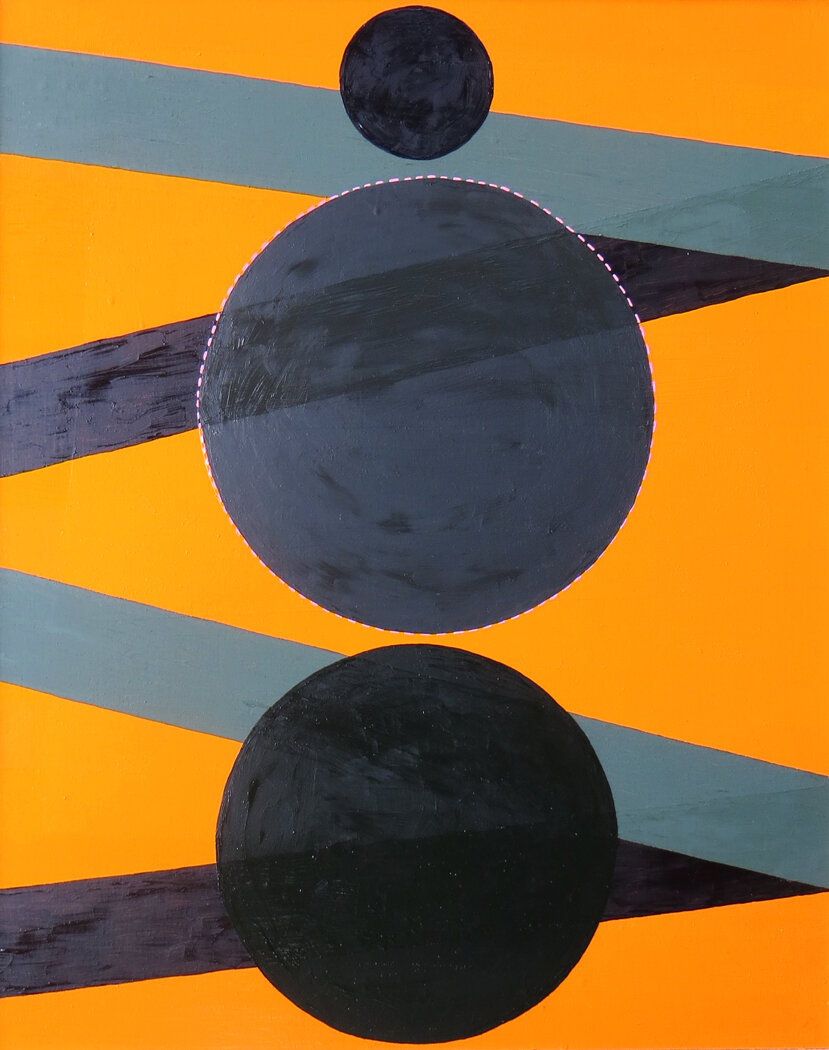

AAS: You also have some paintings on paper. Face was just selected to be a part of the 2022 Small Works on Paper exhibition put on by the Arkansas Arts Council. That has always been a wonderful annual exhibition, congratulations.
Face, 20” x 18”, oil on Yupo paper
SW: Like the annual Delta show at the Arkansas Arts Center, I always submit a drawing to the Small Works on Paper Exhibition curated by the Arkansas Arts Council. This show is a diverse collection of some of the best artists in Arkansas. Each year a juror selects about 30 works on paper that can be no larger than 24 x 18 inches. I have been fortunate enough to have been selected to be a part of the Small Works on Paper show 9 times over the last 20 years. This is the first time my work was selected by the juror to be purchased for the Arkansas Arts Council. I am grateful for this honor.
AAS: The last two years have been tough for everyone, especially artists because most galleries were closed, and exhibitions cancelled. Things seem be to really ramping up for you now, though.
SW: I would say that the pandemic didn’t slow me down. In fact, I had more time to paint because my job in education took place mostly at home. This provided more time for me to do my personal work. The commuting time to work and all the time spent doing the small things that we do to prepare for the school day as educators was suddenly available to me.
In the past two years, I have had several opportunities to exhibit work. During the pandemic, I began showing work at Justus Fine Art Gallery in Hot Springs. This is a wonderful gallery space and Dolores Justus has a discerning eye. I am very honored to have my work in her gallery. In 2021 alone, I exhibited work at 211 South in Bentonville alongside Jessica Mongeon. I already mentioned that my work will be included in an inaugural exhibition of Northwest Arkansas artists at the Walton Arts Center visual arts gallery, and I am working on putting together a show of regional artists for the end of the year. As I said, starting January 2022, my drawing will be a part of the Small Works on Paper exhibition. I am hoping to ride this wave for a while longer and possibly achieve new heights. Thanks for taking the time to talk with me. Your questions helped me understand myself better.
